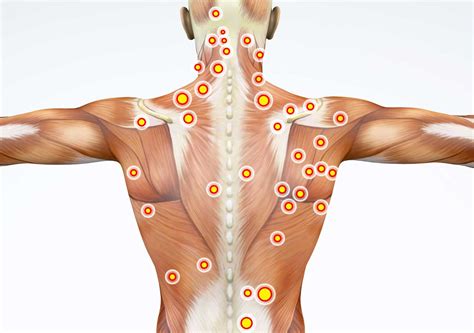Trigger Point Injections: What to Expect, When to Expect It
Trigger point injections are a minimally invasive medical procedure used to treat myofascial pain syndrome, a condition characterized by persistent muscle pain and stiffness. This article will explore what to expect before, during, and after a trigger point injection, helping you understand this treatment option thoroughly. We'll also address common questions surrounding the procedure's timing and effectiveness.
What are Trigger Points?
Before delving into the injection itself, let's understand trigger points. These are hyperirritable spots within a taut band of skeletal muscle. They're often palpable as small, firm knots under the skin. When pressed, trigger points can refer pain to other areas of the body, a phenomenon known as referred pain. This referred pain can be significantly debilitating and limit daily activities.
What Happens During a Trigger Point Injection?
A trigger point injection typically involves the following steps:
-
Identification of Trigger Points: Your doctor will carefully examine your affected muscles to pinpoint the exact location of the trigger points. This may involve palpation (feeling the muscle) and assessing your pain patterns.
-
Local Anesthesia: A small amount of local anesthetic, like lidocaine, is usually injected into the area to numb the skin and muscle. This minimizes discomfort during the procedure.
-
Injection of Medication: Once the area is numb, a small needle is inserted directly into the trigger point. The doctor will then inject a medication, often a corticosteroid or a saline solution, to reduce inflammation and muscle tension. Sometimes, a combination of anesthetic and steroid is used.
-
Post-Injection Observation: After the injection, you'll likely be monitored for a short time to ensure there are no immediate adverse reactions.
What to Expect After a Trigger Point Injection?
Following the procedure, you might experience:
- Minor discomfort or soreness: This is normal and usually subsides within a few days. Over-the-counter pain relievers can help manage any discomfort.
- Slight bruising or swelling: This is also common and typically resolves within a week or two.
- Temporary improvement in pain: You might notice some relief immediately, but the full effects may take several days or even weeks to become apparent.
How Long Does it Take for Trigger Point Injections to Work?
The timeline for experiencing pain relief varies greatly depending on several factors, including the severity of your condition, the number of trigger points treated, and your individual response to the medication. Some patients experience immediate pain relief, while others may see significant improvements within a few days or weeks. In some cases, multiple injections may be necessary to achieve optimal results.
When Should You Consider Trigger Point Injections?
Trigger point injections are typically considered when other conservative treatments, such as physical therapy, rest, and over-the-counter pain relievers, have proven ineffective in managing your myofascial pain. Your doctor will consider your medical history and the severity of your condition before recommending this procedure.
Are Trigger Point Injections Right for Me?
This is a question best answered by your doctor. They will perform a thorough examination, assess your symptoms, and discuss the risks and benefits of trigger point injections to determine if it’s an appropriate treatment option for your specific situation. It's crucial to have an open discussion with your healthcare provider to fully understand the procedure and manage expectations.
What are the Risks and Side Effects of Trigger Point Injections?
While generally safe, trigger point injections do carry some potential risks and side effects, including:
- Infection: As with any injection, there's a small risk of infection at the injection site.
- Bleeding: Some minor bleeding or bruising is possible.
- Nerve damage: Although rare, nerve damage is a potential complication.
- Allergic reaction: Allergic reactions to the injected medications are possible, though uncommon.
How Many Trigger Point Injections Will I Need?
The number of injections required will depend on the individual patient and the extent of their condition. Some patients may only need one or two injections, while others may require multiple treatments over several weeks or months. Your doctor will create a personalized treatment plan based on your needs.
Can Trigger Point Injections Cure Myofascial Pain Syndrome?
Trigger point injections are not a cure for myofascial pain syndrome, but they can provide significant pain relief and improve function. They are often used in conjunction with other treatments like physical therapy to manage the condition effectively.
This information is for general knowledge and should not be considered medical advice. Always consult with a qualified healthcare professional to discuss your specific needs and treatment options.

